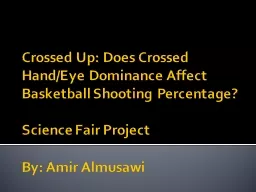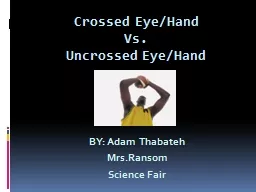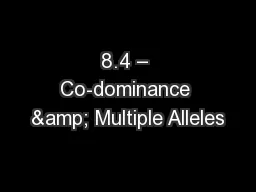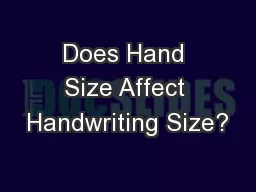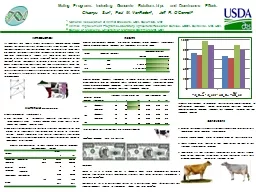PPT-Crossed Up: Does Crossed Hand/Eye Dominance Affect Basketba
Author : liane-varnes | Published Date : 2016-03-12
Science Fair Project By Amir Almusawi PurposeProblem The purpose of this experiment is to learn about crossed hand eye dominance and help increase free throw
Presentation Embed Code
Download Presentation
Download Presentation The PPT/PDF document "Crossed Up: Does Crossed Hand/Eye Domina..." is the property of its rightful owner. Permission is granted to download and print the materials on this website for personal, non-commercial use only, and to display it on your personal computer provided you do not modify the materials and that you retain all copyright notices contained in the materials. By downloading content from our website, you accept the terms of this agreement.
Crossed Up: Does Crossed Hand/Eye Dominance Affect Basketba: Transcript
Download Rules Of Document
"Crossed Up: Does Crossed Hand/Eye Dominance Affect Basketba"The content belongs to its owner. You may download and print it for personal use, without modification, and keep all copyright notices. By downloading, you agree to these terms.
Related Documents

